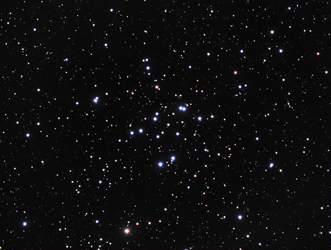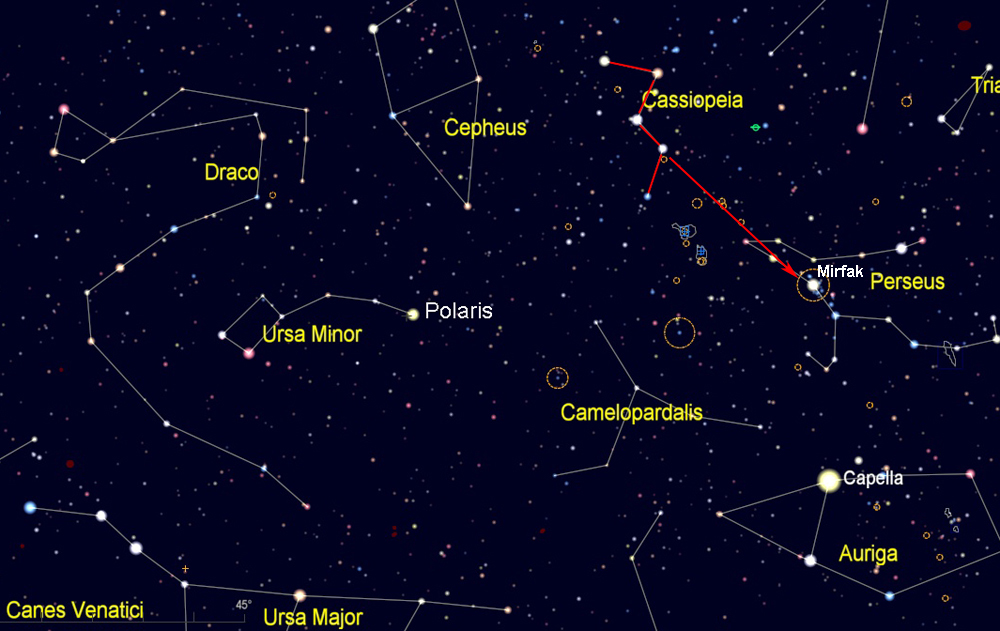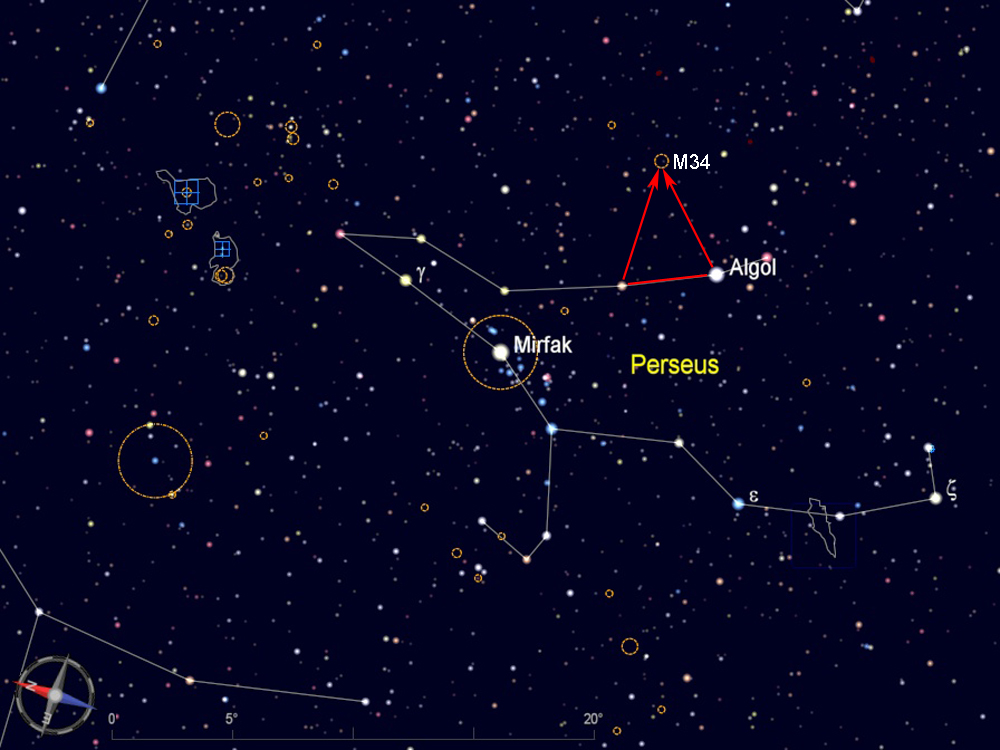
Find the constellation Cassiopeia, which has a distinctive "W" shape (although its orientation changes at different times of year as it circles the north celestial pole). On fall evenings, look for Cassiopeia in the northeast, where its tilt makes it look like a "3", and in the winter look high in the north above Polaris, where it is oriented like an "M".
As shown below, use the stars of Cassiopeia to direct you to the nearby constellation Perseus, and its brightest star, Mirfak.

The stars of Perseus are fairly bright. The shape I see is some sort of animal with a curved tail. Whatever shape you see, look for the bright star Algol and the somewhat dimmer star to its north. As shown below, form a slightly elongated triangle with these two stars as the base, and the third point of the triangle will show the location of Messier 34. This is a bright cluster that should be easy to see in binoculars or a finderscope.
